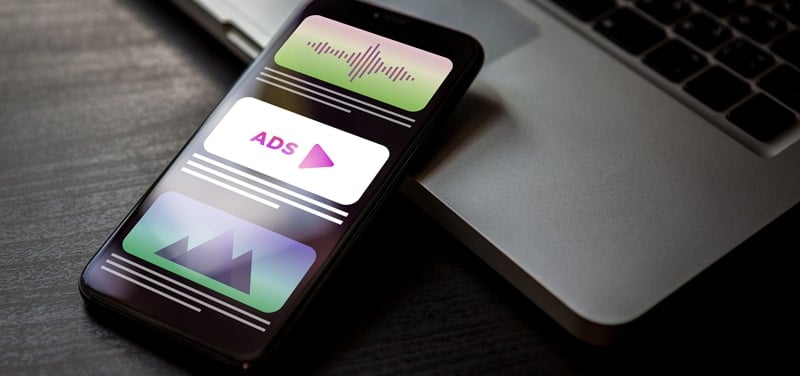In the current digital age, businesses are built and strengthened with powerful and smart digital marketing strategies. Without planning your digital marketing campaign, you’re not able to generate engagements; and that means a failed business.
That’s where digital media, facilitated through the right channels and converting content, comes in; to help brands be everywhere. With the media spotlight, it’s possible to reach out to many people and spread converting words about the company.
Before leveraging converged media strategy (digital media), you need to learn how to go about it. In this piece, we’ll help you know how to run successful campaigns with the 3 types of digital media, and everything in between.
At a Glance: Here are the 3 Types of Digital Media
- Owned Media
- Paid Media
- Earned Media
What Are The 3 Types of Digital Media [With Examples] For Your Marketing Plan?
Below is a comprehensive breakdown of the differences, examples, benefits, and roles of (3) types of digital media.

Type 1. Paid Media
Paid media is quite popular, and we’re all aware of it. It involves all marketing channels that a brand invests in to get an audience. Here you pay a third party platform with specifications on what you want.
It’s ideal for both new and established businesses. Since it aims at increasing the audience for your brand, many people get to know about it, and that’s how a new brand gets to build a client base, while established ones benefit from retargeting.
If your brand is looking for a channel that’s easy to monitor, control content, and track progress while guaranteeing instant returns, consider embracing paid media.
It even converts better in conjunction with other digital media, because you target even high-interest clients. When it comes to cost, it depends on your preferred channel, and the time your ad takes.
If you want to enjoy paid media advantages, prefer channels where you get value for your money. More so, have the right expert set the ads for you.
With excessive approach and exaggerate disclosure, you don’t want your brand to be a nuisance and extremely uncomfortable to clients. Have a good campaign, on the right channel, and at the right time.
Paid Media Examples
Examples of paid media involve both offline and online channels. Some of them include the following:
Search Engine Ads
Search engine marketing (SEM) allows you to grow your business in a crowded and competitive marketplace strategically. With search engine ads consisting of the right keyword and quality score, you position your business at the top of SERPs when customers query the search engine.
SEM ads include:
- Cost-per-thousand impressions or cost per mille (CPM)
- Google AdWords or Pay-Per-Click (PPC)
Display Ads
We can’t talk about online paid media without mentioning display ads. If you get a site with good traffic and charges ad placement fairly, your retargeting efforts become a reality.
The ads are popularly displayed through the following:
- Website sidebars
- Video ads
- Wallpaper ads
- Popups
Podcast Ads
With the growing popularity of podcasts, a perfect channel and audience grow your business. You only need to research and know where to maximize your ad focus. Narrative shows are among the best platforms.
Social Media Advertising
Ads in social media target customers based on their experience and locations. That’s why you see some sponsored ads and feed with various products. It’s quite affordable and allows for pay per click. It’s awesome in both offline and online businesses.
Whether alone or with a marketing agency, Pinterest, LinkedIn, Facebook, Twitter, and TikTok are quite effective social media platforms.
See also: How Social Media Is Used In Healthcare
Video Ads

You might have come across a video ad when streaming videos in your favorite spots. It’s common on YouTube. Alternatively, brands can leverage the high-traffic websites that allow video ads.
Radio Ads
Though not many use them, radio ads are quite effective if directed at the right audience. With short air time given, you need to squeeze your ad and have it run several times. Local businesses benefit a lot from radio ads.
Print Ads
These are offline ads you see around you. They include postcards, magazines, newspapers, flyers, billboards, posters, etc. Although effective when placed appropriately, the print ads are relatively expensive because of the production process involved.
Type 2. Owned Media
Owned media is what your brand owns and controls. It doesn’t mean that you necessarily own the platform, but your company controls the respective accounts through which they publish their content about services and products.
That means there is no money that you pay to others to help you, but you need trained and dedicated owned media team to run operations. With free social media accounts and fairly priced domain and host for your websites, you’re good to go.
Besides pushing the products to the customers, owned media must focus on maximizing client’s value and benefits from the brand. It’s easy to know how your media progresses with tools like Google Analytics.
Since its company-owned, there is complete control of the channels, limited operation costs, and the ability to publish and scrutinize the content fully, which boosts customer trust and guarantees leads and engagements.
Owned Media Examples
Here are a few examples of owned media:
Email Marketing

Email marketing is owned media because the company owns the email content and list. Irrespective of whether you pay a provider or not. Since emails are targeted to particular individuals, it’s possible to combine with other media, through blogs and affiliate links to convert more.
Social Media
Social media platforms are part of owned media and convert pretty good when well handled. With billions of active users worldwide, proper positioning allows you to enjoy recognition from the target audience all over.
Social media posts on Facebook, Instagram, Twitter, and TikTok are game-changers since they allow users to comment, share, and retweet.
Blogs (Content Marketing)
Through content marketing, it’s possible to engage your audience. Good content makes your brand stand out and rank better than your competitors. Remember, content is king. Know what your client consumes, and focus on delivering exactly that.
For instance, useful blog content delivered in a conversational tone stimulates responses and engagements from the target audience. Coupled with paid media, you can get awesome results.
A Company Website
A website introduces the brand to its customers. Most companies invest in professional websites and operate them like a one shop store, where everything regarding a brand is answered or solved.
If well maintained, websites serve the company well and for long, not forgetting that you own it with total control. Websites don’t rank or deliver results in a day. With quality client relationships, content, and features, it’s rewarding in the long run.
Type 3. Earned Media
Earned media is anything, whether content or mention, that comes from another entity to benefit your brand. While most of it is voluntary, some require you to spend a substantial amount.
For example, likes and comments on your post come for free. You only need to post relevant content and share it widely. Review platforms are also free, but premium features require you to pay a little. Again, it depends on the platform of choice.
Earned media will expand your brand reach, boost credibility, and enhance awareness. Your brand needs that loyalty and trust from earned media to get leads, sales, and relevance.
Earned Media Examples
Some examples of earned media are explained below:
Reviews

Review platforms showcase word of mouth from previous customers. Every company wants to share positive testimonials and reviews to show how credible they’re in the marketplace.
Social Media
Social media is an awesome earned media platform. Here, companies enjoy reposts, mentions, and likes to reach many potential customers.
When combined with owned and paid media, you get to increase the leads. Let say you share your blog post on Facebook, then sponsor the post. That’s a win-win for all three types of media.
Search Engine Optimization (SEO)
Rather than paying for ads. Good and well-optimized content will position you at the top SERPs pages. That makes SEO earned media because you’re not paying to get organic results.
SEO may not pay in a day but worth it in the long run. It’s because it takes time to rank. If you use it alongside owned or paid media, it’s a game-changer in modern marketing.
(See our list some of the best SEO tools here.)
Free Media Publicity
Startups without so much to spend can enjoy publicity from some media outlets that allow free coverage. You only need to have an exceptional product with a good story.
Keep pushing and send a press release. If your budget allows, you can sponsor a show for more benefits because you get to showcase what you have.
Word-of-mouth Marketing
Word-of-mouth marketing is a paid, earned, and owned media. Due to its diversity, it’s a powerhouse to leverage. In paid media, it’s actualized in influencer or referral programs. If you’re running own campaigns and referral programs, then its owned media. When used for viral growth, it’s an earned media.
Embrace Digital Media Marketing for Your Business Today
Owned, paid, and earned media channels comprise of most marketing approaches leveraged today. Even though they’re different, embracing them brings about awareness, business growth, and leads. Engaging all three (3) types of digital media and analyzing the outcomes will help you know what works for you.
Need specific advice, clarification, or marketing assistance on what are the 3 types of digital media? Get in touch today.
Shawn Manaher is the founder and CEO of The Content Authority. He’s one part content manager, one part writing ninja organizer, and two parts leader of top content creators. You don’t even want to know what he calls pancakes.

![What Are The 3 Types of Digital Media [with Examples]](https://thecontentauthority.com/wp-content/uploads/2020/07/what-are-the-3-types-of-digital-media-1.jpg)